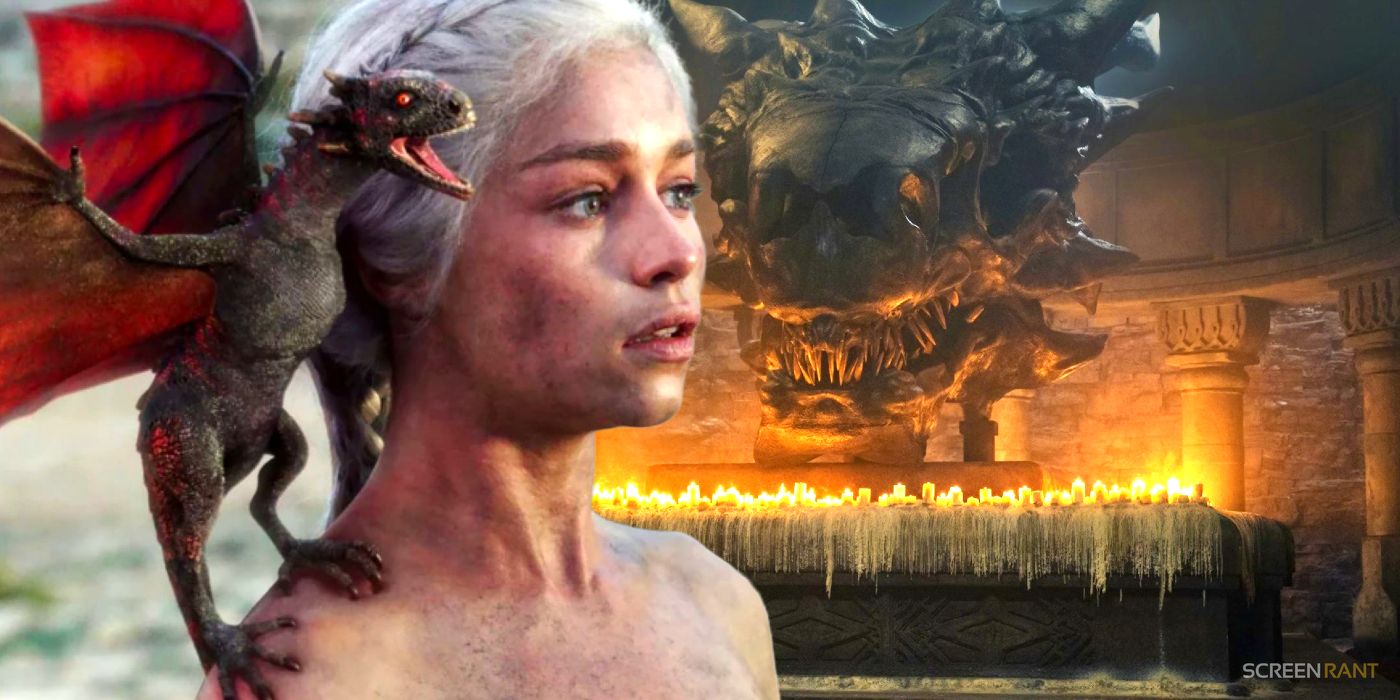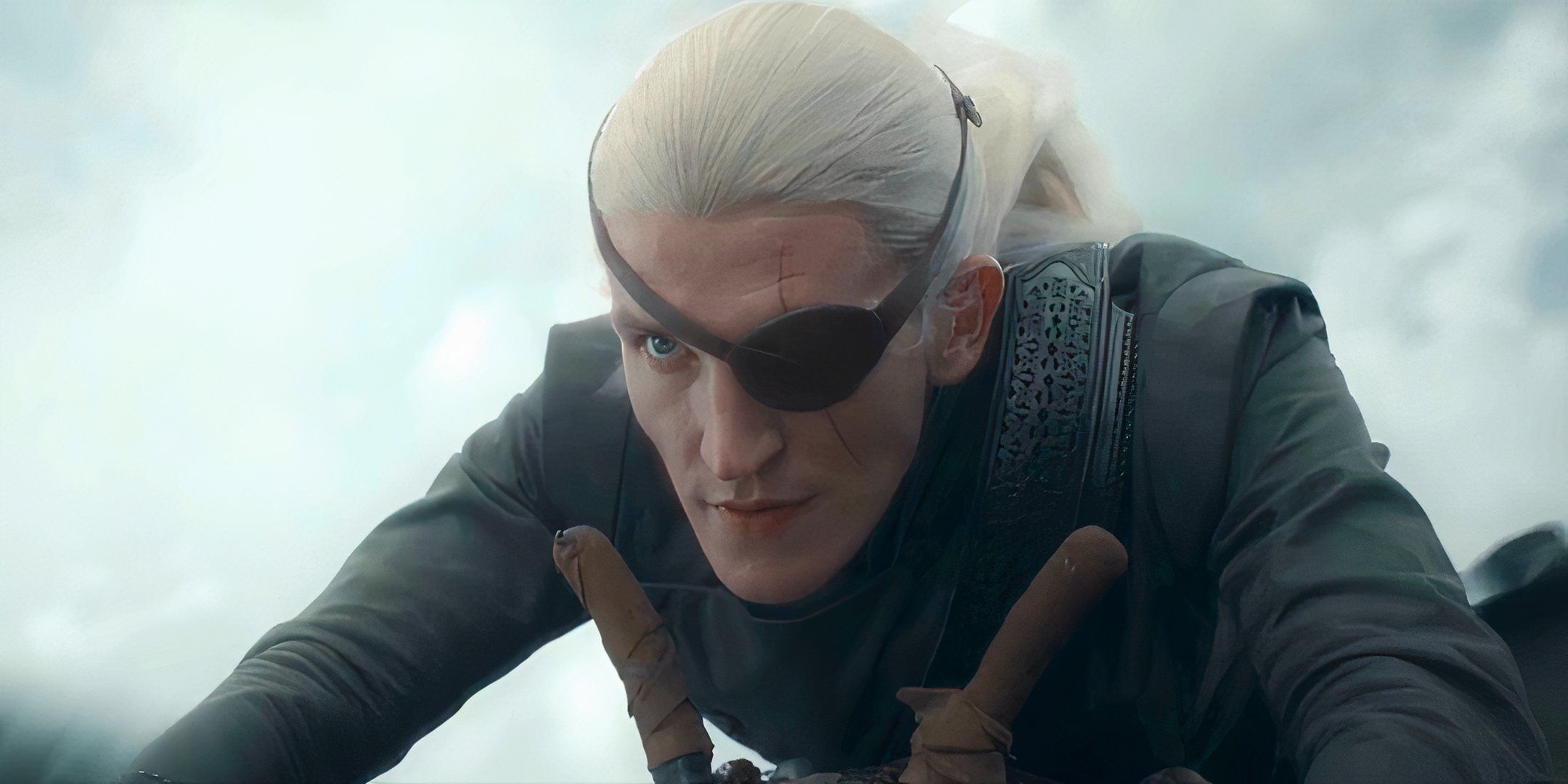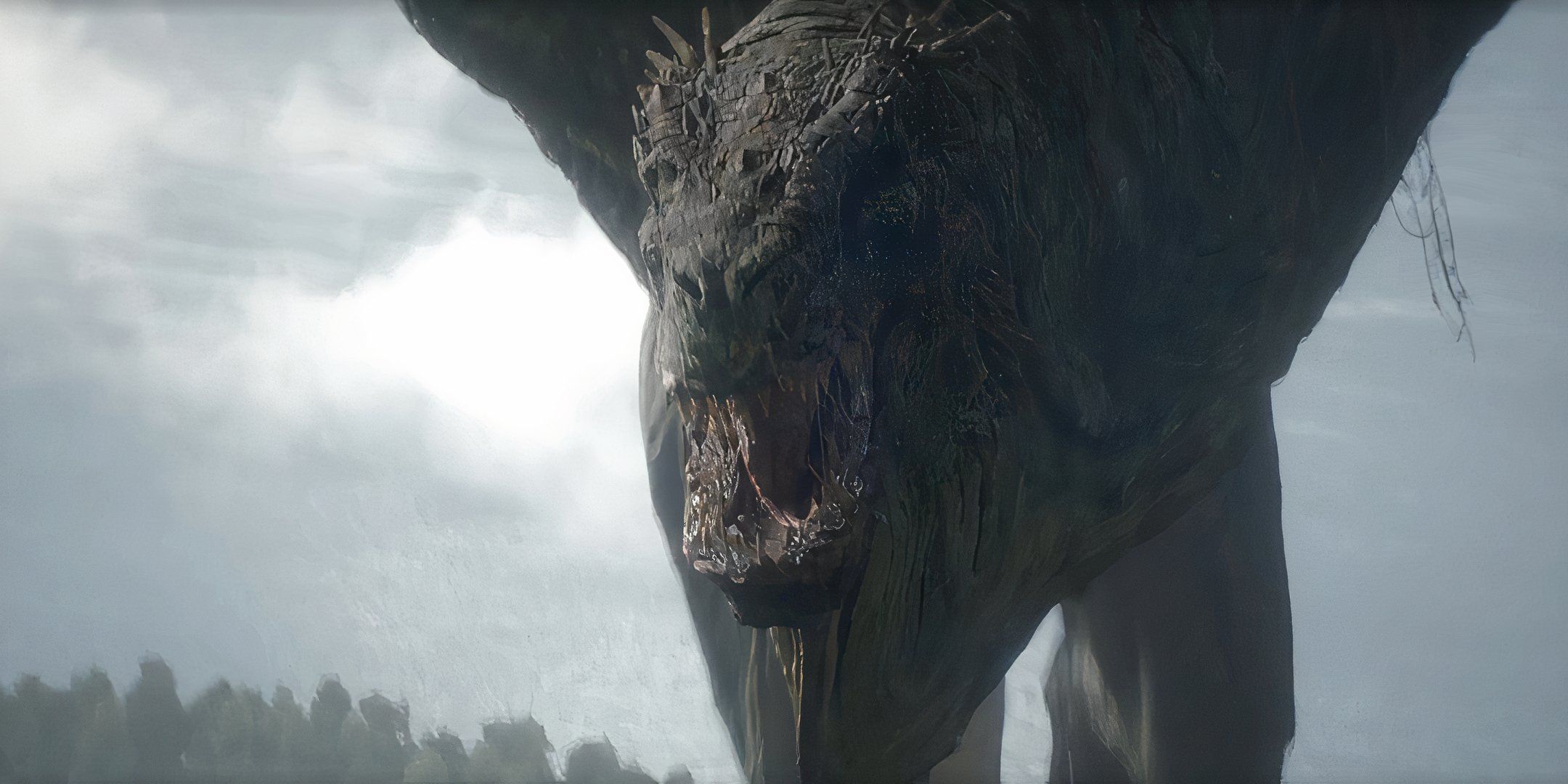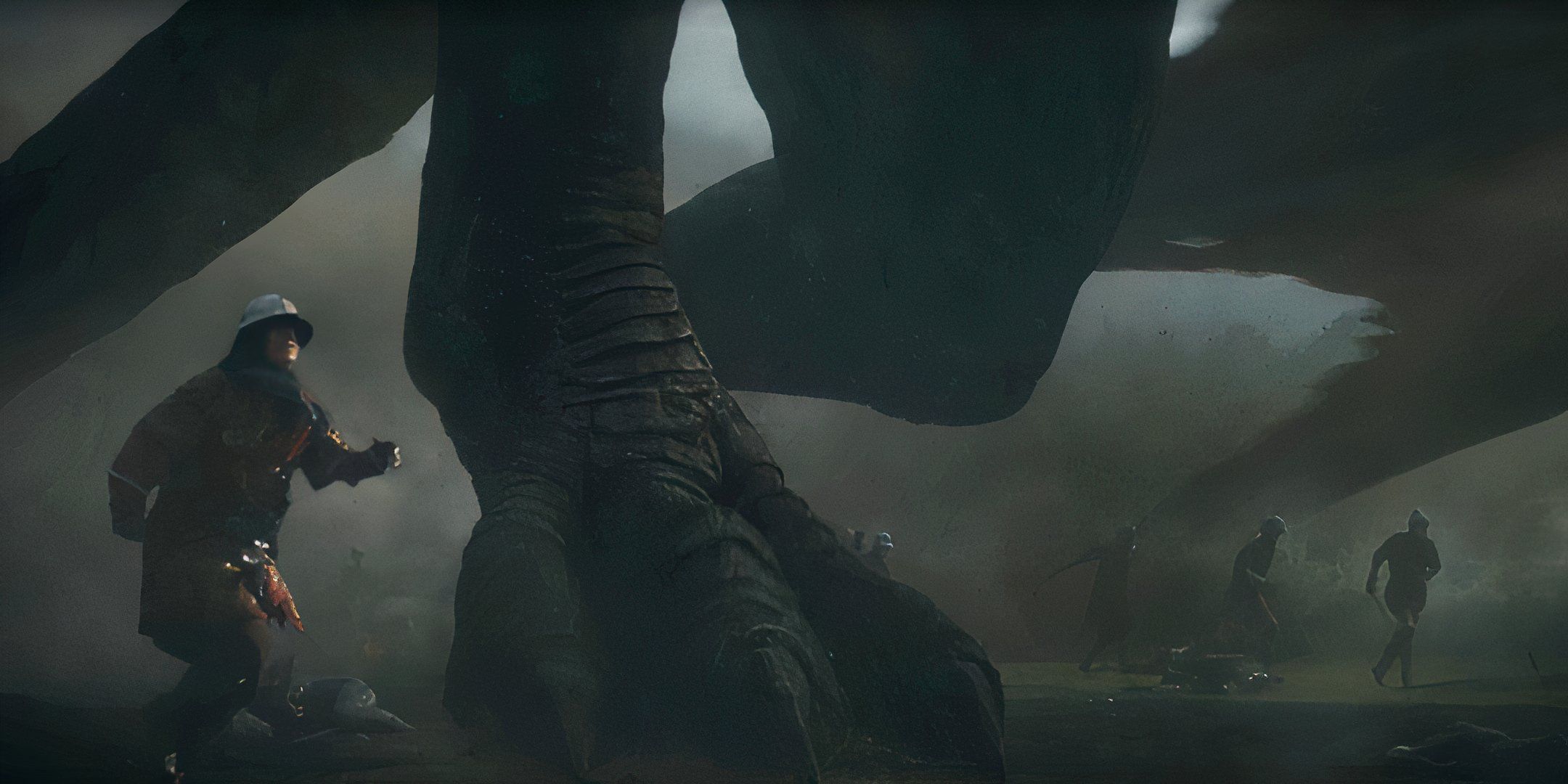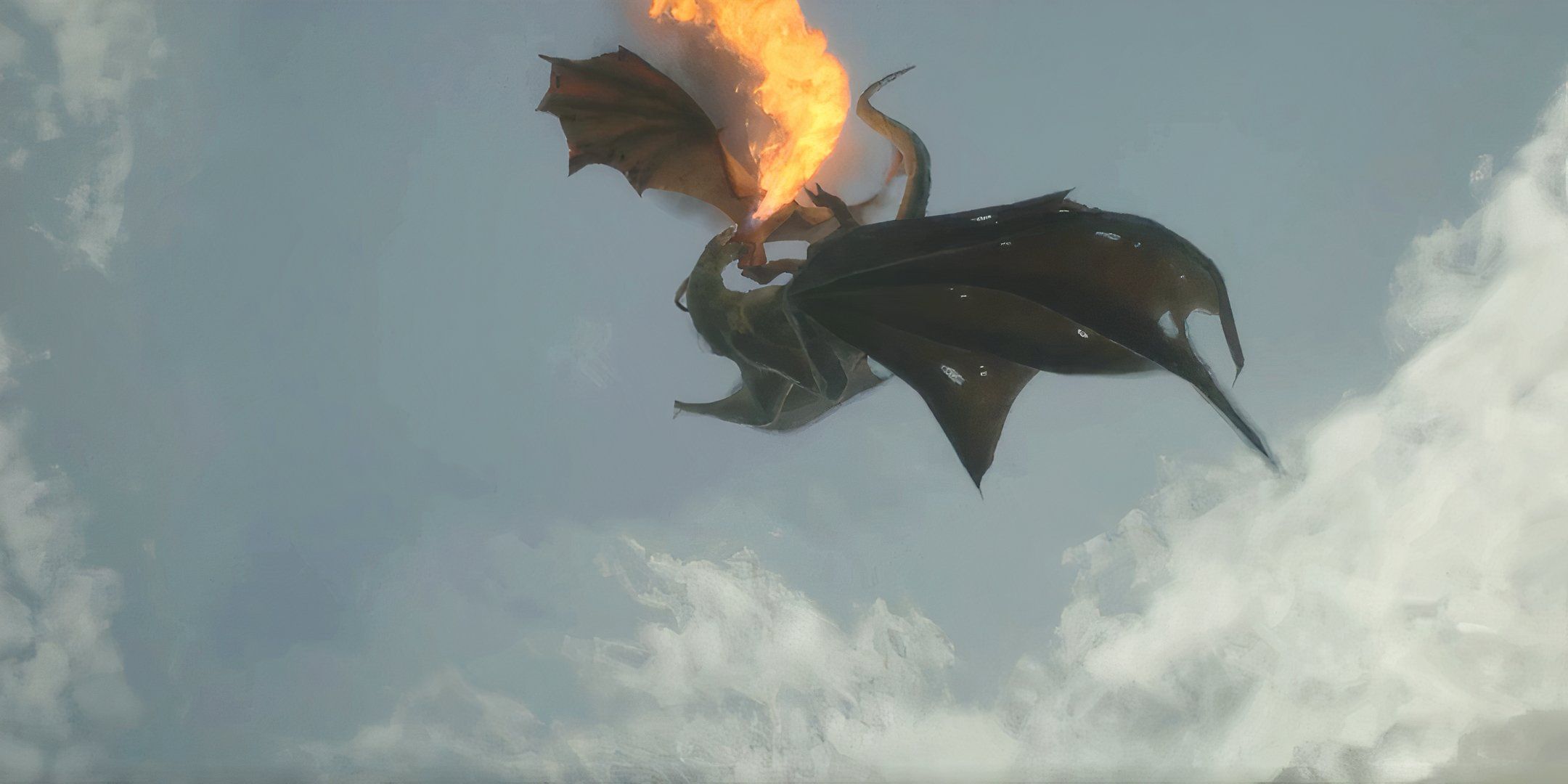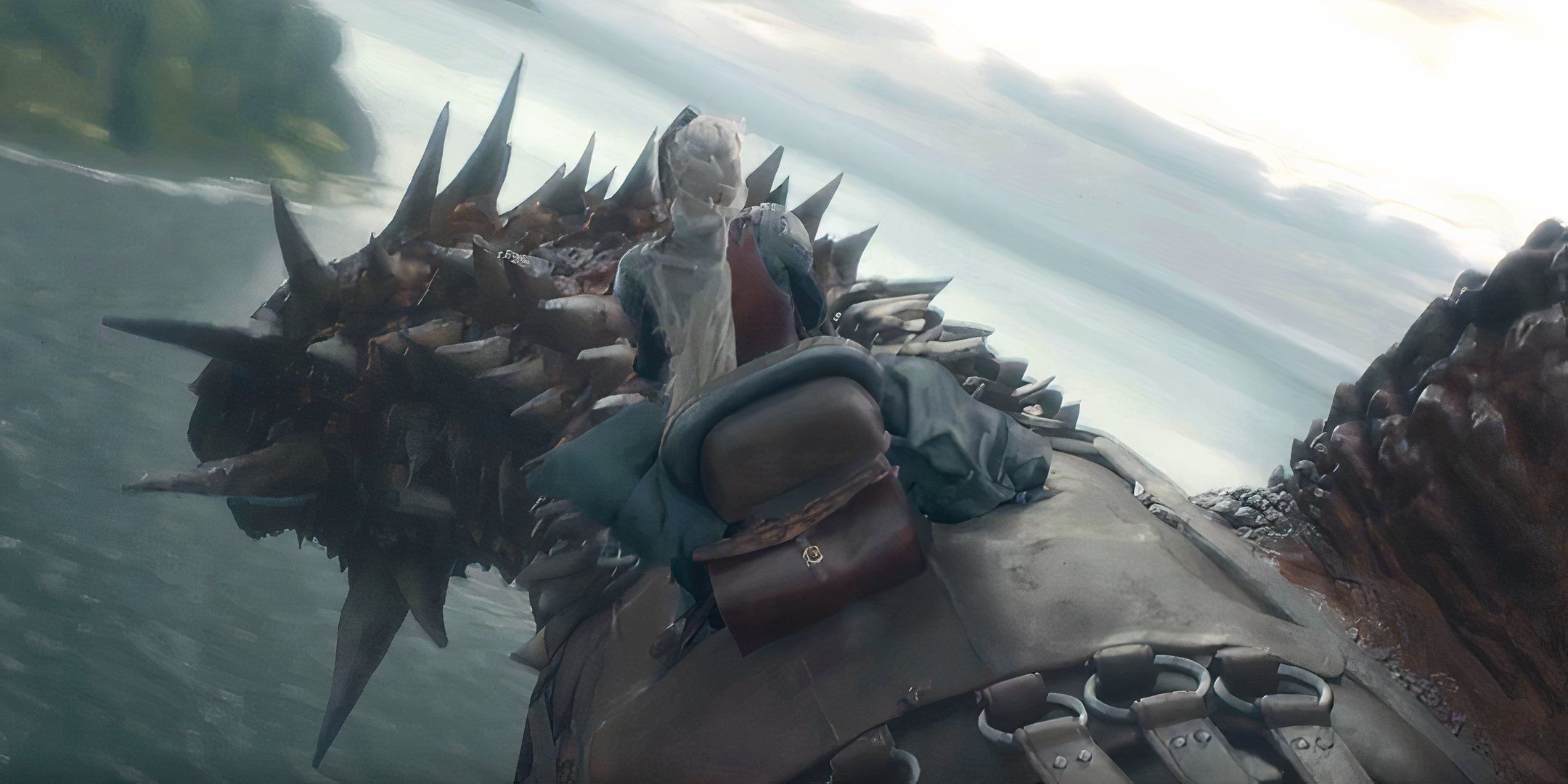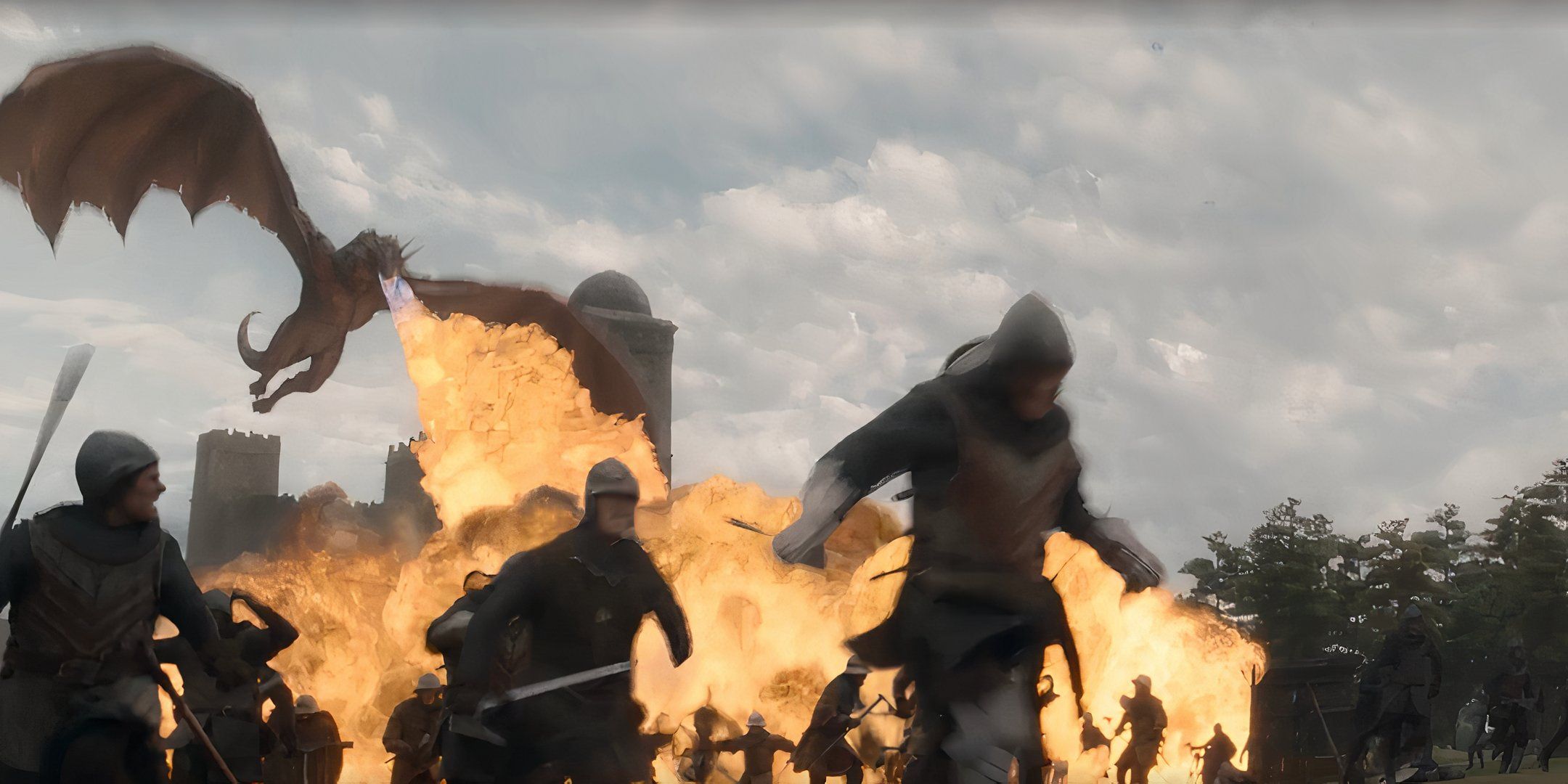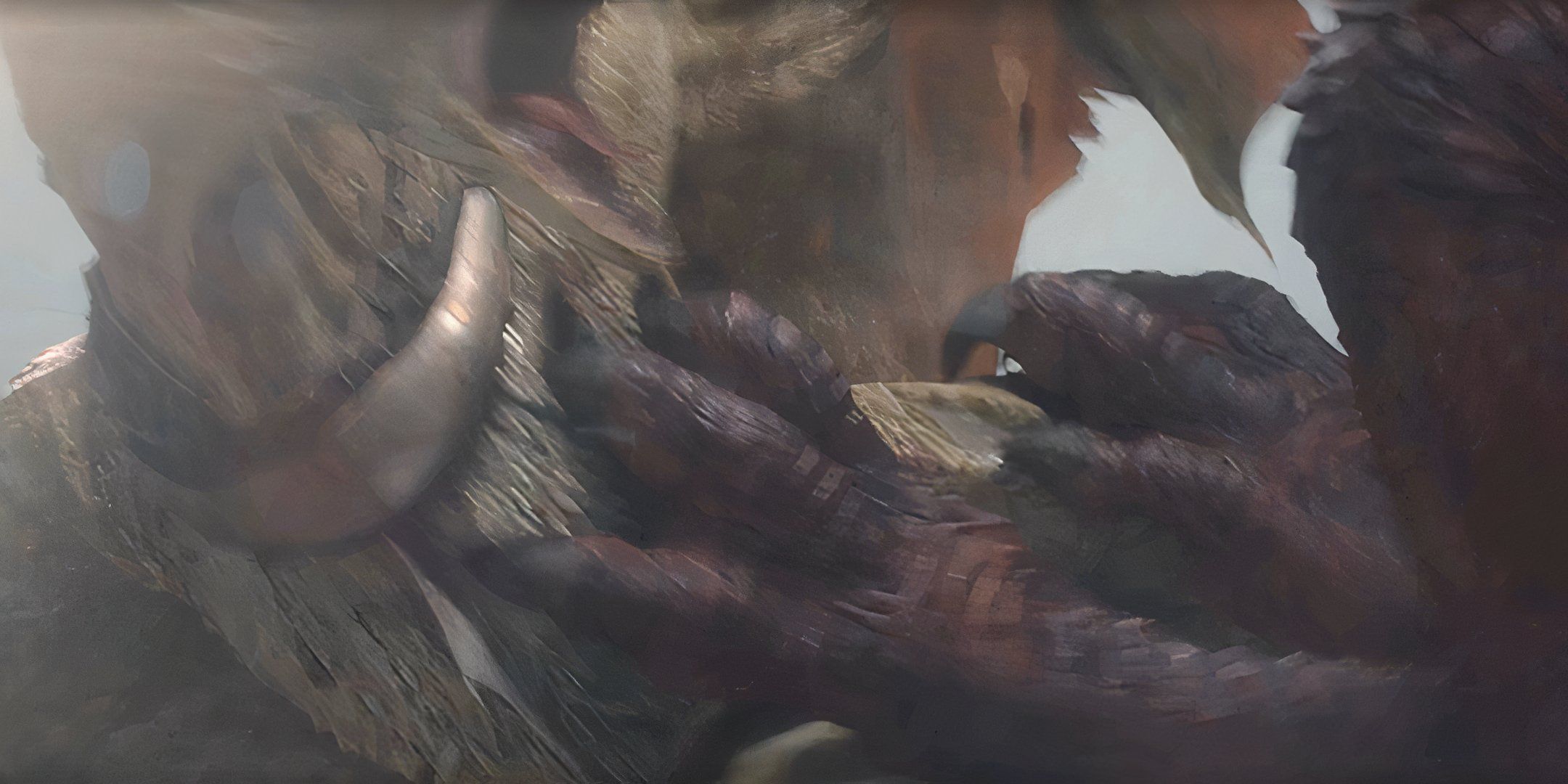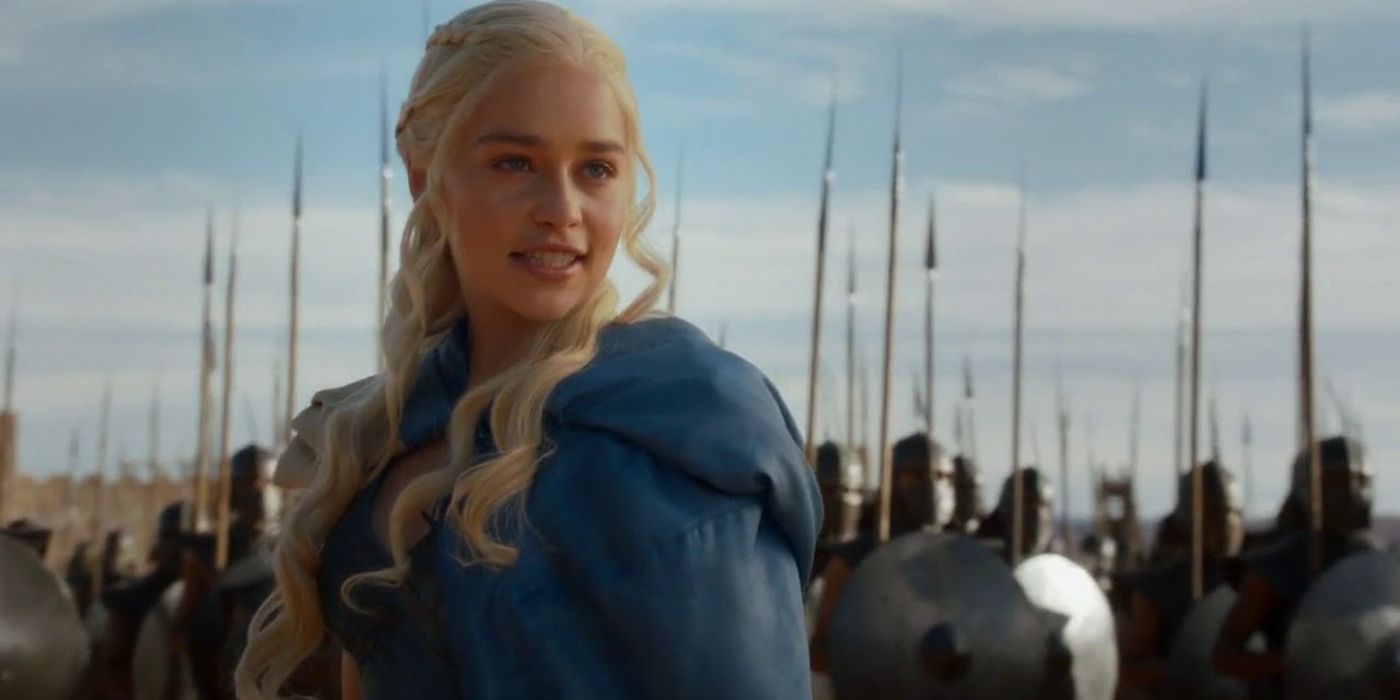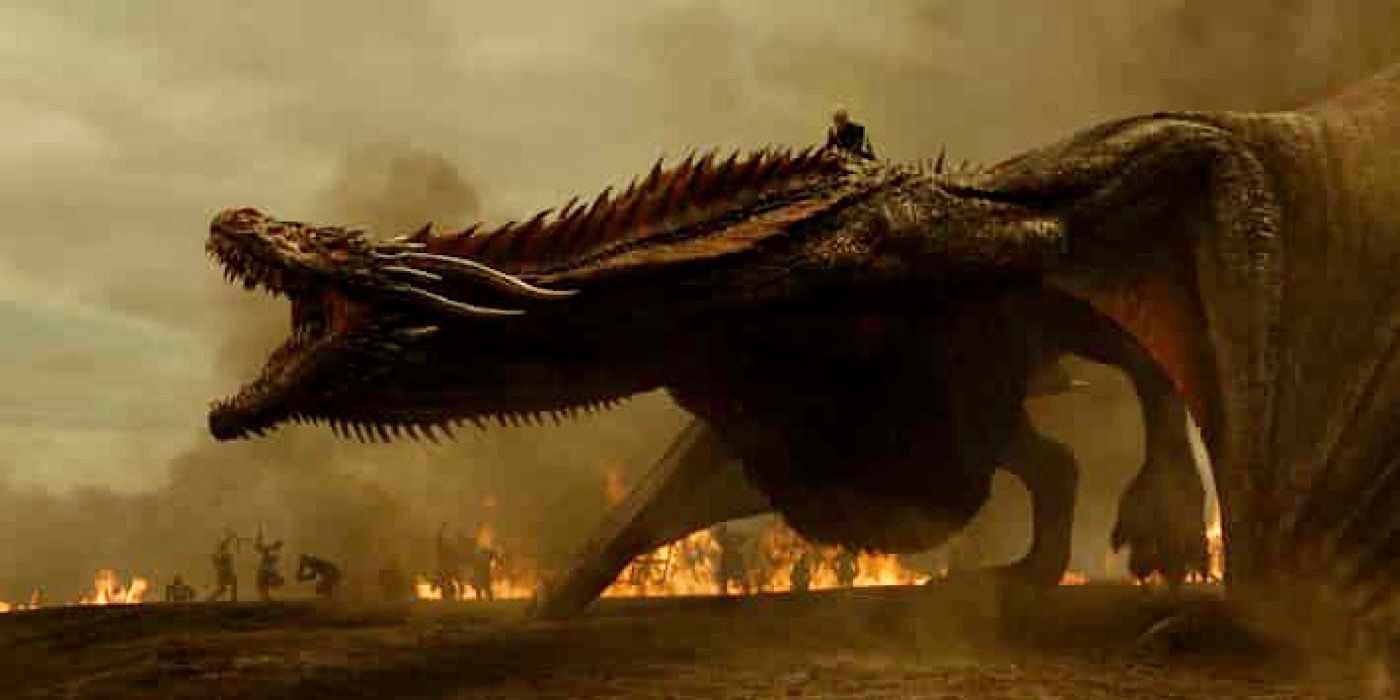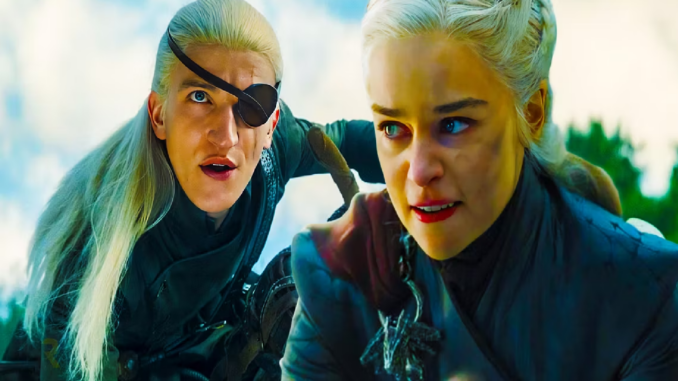
While House of the Dragon retconned an important part of Daenerys Targaryen’s dragonrider story, Aemond’s use of “dracarys” in season 2 makes the change worth it. Daenerys Targaryen first utters the word “dracarys” in Game of Thrones season 2 when trying to teach her dragons to breathe fire and cook meat, with Drogon, Viserion, and Rhaegal successfully performing the command when burning Pyat Pree soon after. As the HBO series goes on, Daenerys uses “dracarys” numerous times in battle, to destroy her enemies, and to light fires on various occasions.
The High Valyrian phrase returns in House of the Dragon when Targaryen dragonriders make their dragons breathe fire. Rhaenyra, Jacaerys, Daemon, Laenor, Laena, and Aemond are among the dragonriders heard saying “dracarys,” though since Aegon can’t speak High Valyrian, he trained Sunfyre using the Common Tongue. In House of the Dragon season 2, episode 4, “dracarys” makes an especially memorable appearance when Aemond tries to kill Aegon using Vhagar’s dragonfire. Despite the excitement of hearing the High Valyrian command again, its use in House of the Dragon is a retcon of a significant Daenerys Targaryen detail.
How House Of The Dragon Retconned “Dracarys” From GOT & A Song Of Ice & Fire
Dany Came Up With “Dracarys” On Her Own In The book
While the word for “dragonfire” in High Valyrian is “dracarys,” this wasn’t taught to Daenerys for training dragons or understood as being a past command used by dragonriders. After all, the last of the Targaryen dragons died out over 150 years before Daenerys’ hatched in Game of Thrones. In George R.R. Martin’s A Song of Ice and Fire books, it’s revealed that Daenerys came up with the idea on her own to use “dracarys” when training her dragons to breathe fire. In A Storm of Swords, it isn’t clear what words former Targaryen dragonriders used for dragon commands, so Dany has to explain her choice to Jorah:
“Dany giggled. ‘Be careful with that word, ser, or they’re like to singe your beard off. [Dracarys] means ‘dragonfire’ in High Valyrian. I wanted to choose a command that no one was like to utter by chance.’”
In House of the Dragon season 1, this part of Dany’s story is retconned, as it’s revealed that Targaryens had always used “dracarys” as a command for their dragons to breathe fire. Young Rhaenyra uses “dracarys” to have her dragon Syrax burn the funeral pyres of her mother and brother, with the other Targaryen and Velaryon dragonriders in the prequel also being shown to use this specific command. This was never previously established, so is a significant change to the use of the word
Why House Of The Dragon Retconning “Dracarys” Works
House Of The Dragon’s Decision Makes Sense For Logical Reasons And Consistency
Emilia Clarke’s Daenerys Targaryen has several iconic Game of Thrones scenes in which she masterfully speaks High Valyrian, but the most recognizable word in the show’s fictional language is “dracarys.” The word is said by Daenerys with fury, strength, glee, power, satisfaction, and grief at various points in Game of Thrones, with nearly every use of “dracarys” being followed by an epic or shocking moment.
It may never have been previously revealed as something that past Targaryens had used, but there is logic to the decision, and just because it’s a retcon of the word doesn’t mean that’s a bad thing (nor take away from Dany’s discovery). Being such a recognizable franchise-specific word associated with Game of Thrones’ only bonded Targaryen dragonrider and some of the show’s biggest scenes, House of the Dragon bringing it back makes perfect sense.
It would prove quite jarring to hear the Targaryens in House of the Dragon using a different command for dragonfire from “dracarys.”
In a show about the Targaryens’ Dance of the Dragons, there will inevitably be occasions in which they command their dragons to breathe fire. However, it would prove quite jarring to hear the Targaryens in House of the Dragon using a different command for dragonfire from “dracarys.” It’s also easy to surmise that past Targaryens arrived at the same conclusion as Dany: the command for dragons to breathe fire should be “dragonfire” in High Valyrian. In addition to reviving the bone-chilling nature of hearing “dracarys” followed by dragonflames, retconning the command’s origin is worth it from a logical standpoint for franchise familiarity and consistency.
Aemond’s attack on Aegon, in particular, shows why it was worthwhile. This is the most important use of the word in House of the Dragon so far, and it’s an absolutely brutal one. Using “dracarys” in this scene gives the moment the necessary weight, leaving no doubt about his true intentions in regard to his brother. As the Dance of the Dragons fully commences, “dracarys” will continue to be used on countless occasions in House of the Dragon.
House Of The Dragon Is (Mostly) Using Its Dragons Better Than Game Of Thrones
The Battle At Rook’s Rest Was A Perfect Showcase For Them
The Battle at Rook’s Rest further highlights that, for the most part, House of the Dragon uses its dragons better than Game of Thrones was able to. This is in part, of course, simply the nature of the show – the prequel has a lot more dragons, and a lot more Targaryens to ride them, so obviously it can feature them more. But that’s not the only reason.
What House of the Dragon does really well is show how distinct the different dragons are, and their different bonds with their riders. There’s a real feeling of connection between, say, Meleys and Rhaenys, or a clear sense of Vhagar’s grumpy old personality, while visually most of the dragons look very different. Game of Thrones did the first part a bit, but only really with Drogon. Plus, beyond the first few seasons, the design of the dragons didn’t clearly show their differences as much.
Rook’s Rest also has the advantage of being able to showcase dragon vs. dragon action in a much bigger way than Game of Thrones did.
Rook’s Rest also has the advantage of being able to showcase dragon vs. dragon action in a much bigger way than Game of Thrones did. Though Viserion clashed with his siblings at the Battle of Winterfell, it was brief and dark. House of the Dragon does it in broad daylight, getting up close and brutal in what’s perhaps the most visceral dragon sequence in the two shows. And, excitingly, it’s something there will be more of going forward, especially in House of the Dragon season 3.
House Of The Dragon Hasn’t Outdone Daenerys’ Best “Dracarys” Moment
Dany’s Use Of It In Game Of Thrones Season 3 Was Epic
Aemond’s use of “dracarys” is House of the Dragon‘s best moment with the word yet, but it doesn’t quite beat Game of Thrones‘ most epic scene involving it. That’s not to say that overall, the Battle at Rook’s Rest isn’t more impressive, but specifically on the point of that word, Daenerys saying it in Game of Thrones season 3, episode 4, remains the gold standard.
It’s a truly epic sequence that really establishes the power of Dany’s dragons, and that she was unafraid to use them, with perfect line delivery from Emilia Clarke.
This came as part of a twist against slave master Kraznys mo Nakloz, wherein Dany, having previously pretended not to understand him, revealed she could fluently speak High Valyrian. She tells him “zaldrīzes buzdari iksos daor,” – a dragon is not a slave – and then utters “dracarys” to have Drogon burn him to death. It’s a truly epic sequence that really establishes the power of Dany’s dragons, and that she was unafraid to use them, with perfect line delivery from Emilia Clarke.
| House Of The Dragon Season 2’s Remaining Episodes | |
|---|---|
| Episode # | Release Date |
| 5 | July 14 |
| 6 | July 21 |
| 7 | July 28 |
| 8 | August 4 |
The High Valyrian Word For Dragon Is Very Different To Dragonfire
The Language Creator Had A Good Reason For The Differences
One interesting aspect of the High Valyrian language when looking at the word dracarys is that the word for dragon itself is very different. The natural assumption would be that the “drac” part of the word is derived from dragon, given its meaning and similarities. That’s not actually the case, though, as the High Valyrian word for dragon is zaldrīzes. Similarly, the word for fire is not “arys,” but rather perzys. David J. Peterson, who created the language for Game of Thrones, explained this on Language Invention:
“I found it unfortunate that a word meaning “dragonfire” would have “drac-” in it – obviously related to the Ancient Greek root that gave us “dragon” in English and related words in the rest of the Indo-European languages. The reason I found it unfortunate is it seems like a rather wild coincidence that the word meaning “dragon” would look exactly like the word that means “dragon” in our world when our world has no connection to the world in the Song of Ice and Fire universe. It’s either a one in a trillion coincidence or very lazy, and I didn’t like that.
“As a result, I decided that drakarys would be a word for actual dragonfire, distinct from other words for “fire” like perzys. I based this idea off the existence of “wildfire” in the series. It’s a type of fire that has very different physical properties from ordinary fire. I reasoned that dragonfire might represent a third distinct type of fire, so having a separate word for it didn’t seem like a big deal.”
It’s quite a fascinating explanation, and really shows how much thought went into creating the language as part of Game of Thrones – and now House of the Dragon‘s – worldbuilding. But more than that, High Valyrian is an essential part of the plot, as seen with things like Aegon’s inability to speak it fluently, or Daenerys’ burning of Kraznys.
